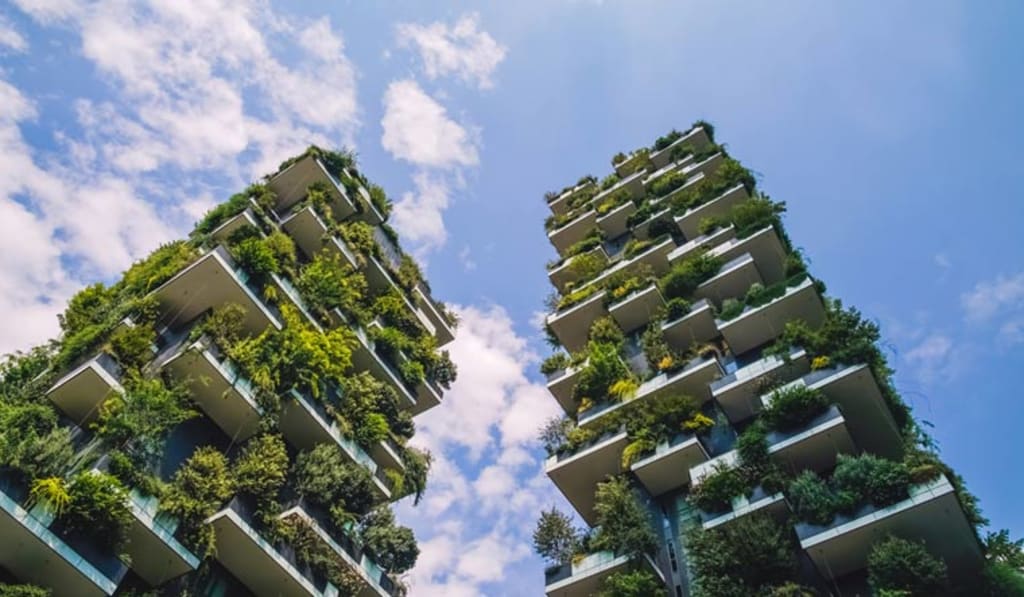The Rise of Edible Landscapes: Cultivating Green Living in Urban Spaces
World Environment Day 2023: The day serves as a reminder that the onus of saving the environment and nature is not just limited to environmentalist and global leaders.

In an era of increasing urbanization and mounting environmental concerns, the concept of edible landscapes has gained significant momentum. This innovative approach involves transforming underutilized city spaces into productive gardens, promoting sustainable and localized food production, while simultaneously enhancing the beauty and functionality of urban environments. Edible landscapes not only provide fresh, nutritious food but also contribute to sustainable food production and reduce the carbon footprint associated with long-distance food transportation.In an era of increasing urbanization and mounting environmental concerns, the concept of edible landscapes has gained significant momentum. This innovative approach involves transforming underutilized city spaces into productive gardens, promoting sustainable and localized food production, while simultaneously enhancing the beauty and functionality of urban environments. Edible landscapes not only provide fresh, nutritious food but also contribute to sustainable food production and reduce the carbon footprint associated with long-distance food transportation.
Promoting Sustainable Food Production
By growing food locally, urban farmers minimize the use of pesticides and herbicides, promote biodiversity, and reduce food waste. These initiatives contribute to a healthier environment by nurturing ecosystems within urban settings. Furthermore, edible landscapes help combat food insecurity by increasing access to fresh produce in underserved urban communities, where nutritious options are often limited.
Diverse Urban Farming Initiatives
Urban farming has taken various forms, including community gardens, rooftop farms, vertical gardens, and hydroponic systems. These initiatives demonstrate the ingenuity and resourcefulness of individuals dedicated to making a positive impact on their communities and the environment. Through repurposing underutilized spaces such as vacant lots, rooftops, and walls, these urban farmers are transforming concrete jungles into vibrant oases of green.
Inspiring Examples
One inspiring example of an edible landscape is 'Urban Leaves,' led by Preeti Patil, a catering officer with the Mumbai Port Trust (MBPT). By converting 3,000 sq. ft of terrace space into an urban garden, she found a unique solution to the problem of waste generated in the MBPT kitchen. What started as an experiment on the rooftop of the kitchen blossomed into a highly productive food forest, providing fresh produce for the canteens and adding natural beauty to the surroundings. 'Urban Leaves' has since expanded to oversee the management of two rooftop community farms, serving as productive spaces and educational centers.
'Green Souls' is another organization based in Mumbai that has created a 30,000-sqft urban farm in Kharghar. They focus on introducing organic farming, composting, and sustainable living while distributing their produce to cancer patients and their families. By actively composting biodegradable waste, 'Green Souls' reduces the environmental impact of waste disposal and conducts workshops to raise awareness and foster sustainable practices.
'Edible Routes' is an organic farming company that offers organic farms, edible landscapes, and products to nurture the earth. They empower individuals to cultivate their own organic and sustainable food in various urban spaces and promote resource utilization and environmental integrity.
Beyond Food Production
Edible landscapes offer benefits beyond food production and environmental sustainability. They contribute to mental health and well-being by creating green spaces that provide respite from urban life's hustle and bustle. These urban oases foster a sense of community, encouraging social interaction and skill-sharing among individuals passionate about growing food and connecting with nature.
Edible landscapes represent a visionary approach to reimagining urban spaces, reinstalling lost greenery, and promoting sustainable living. By embracing this concept, urban communities can cultivate fresh produce, foster biodiversity, and create resilient ecosystems. Edible landscapes not only address environmental concerns but also enhance the well-being of individuals, promote community engagement, and pave the way towards a greener, healthier future for urban dwellers.





Comments
There are no comments for this story
Be the first to respond and start the conversation.